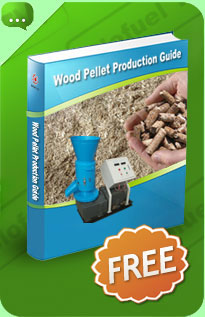Pellet Making Machine
There are two major performance criteria that need considering in picking out a pellet making machine for a specific application.
These criteria are: Retention Time in the die and Power Requirements.
These are interdependent; therefore the proper combination should be selected for the minimum cost operation.
a. Retention time
-- Individual ingredients demand a specific amount of time in the die to bind together and form a pellet of the quality the client requires.
b. Horsepower requirements
-- The power needed to form a pellet depends upon both the ingredients in the formula and the pellet quality needed. Higher pellet quality requires higher power input.
For example:
Formulations with high grain percentages such as poultry feeds normally produce in the range of 200 to 400 pounds per horsepower hour for an integrated operation.
Complete feeds typical of 12 to 15% complete dairy feeds normally pellet in the range of 120 to 160 pounds per horsepower hour.
High protein supplements, concentrates or fibrous products such as alfalfa normally pellet in the range of 80 to 120 pounds per horsepower hour.
Your pellet making machine vendor should be able to review your specific applications for capacity, formulation and pellet quality and then finalize the pellet making machine selection for you. Your own individual knowledge about specific formulations ought to be part of the selection process, which must always include the pellet quality criteria.
Die Speed
One should always run the pellet making machine as fast as possible for the pellet size in production. The reason for high die speeds is evident in our discussion of mat thickness ahead of the pellet mill roll.
We know there is a limit to the thickness of material a roll can accept for any given formulation. The method to maximize production rate within these physical limits is to accelerate the pellet making machine. This generates a thinner mat layer for a given volume of feed, thus producing better stability, potential for higher conditioning temperatures, etc.
There is a limit to this concept. This limit is the amount of breakage from impact as the pellets leave the die and hit the stationary pellet mill door. One can reach a point in which the higher impact speed causes so many fines it actually reduces effective pellet making machine throughput.
Pellet diameter is a major factor in determining proper die speed. As a general rule, small diameter pellets in the 1/8¡± through 1/4¡± diameter run best at higher speeds. Experience has shown a die surface speed of 2,000 ft./min. is ideal in most instances. Here we have the die speed for maximum productivity balanced against breakage of pellets as they hit the stationary pellet mill door.
Cubes are another matter, particularly the 5/8'', 3/4'' and larger cubes. Die speed is much more critical, and surface speed should be limited to 1200-1300 ft/min. to produce quality cubes. Obviously there are certain applications where a feed mill is required to produce both small pellets and cubes. In this specific instance, dual speed pellet mills are available to change die speeds based on pellet mill size. Such speeds can be changed either with mechanical transmissions where one shifts gears, or with frequency variation on the main drive motors.
The importance of die speed is clearly evident in applications using such materials as new crop, higher moisture corn. With high speed pellet mills there are usually no significant variations in pelleting characteristics; yet people pelleting the same product on the same machines with lower die speeds observed operational difficulties, reduced productivity and reduced quality. The reason is simple: the slower speed pellet mill has too thick a mat of feed in front of the roll, causing the roll to slip, which limits both feed volume and conditioning。

